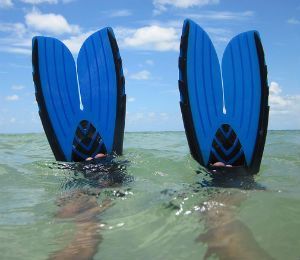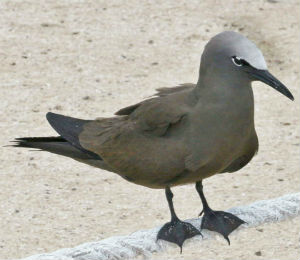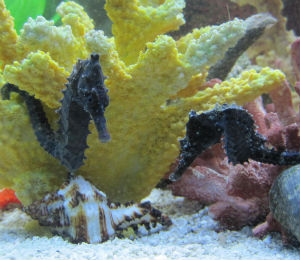There are a surprising number of fins that divers can pick from when preparing to depart on one of the many Key West snorkeling tours that are on offer. From travel fins to split fins to open foot fins, the right choice depends on both the diver and the dive location. In the end, there is not one right choice. It is simply a matter of making an educated decision.
The most common fin, and therefore the one most people will be familiar with, is a closed foot paddle fin. This fin is a good choice for multiple reasons. Firstly, closed foot fins tend to be less bulky as well as less expensive than their open foot counterparts. They do not require any additional water boots or other equipment, and are more flexible than the open foot variety. The lighter weight is an added bonus for travelers with limited space.
Furthermore, for short dives paddle fins offer more manueverability than split fins, as well as more thrust when a swimmer needs to accelerate quickly. It is easier to make sharp turns or to swim in tight areas when wearing this fin style. These traits have made this traditional paddle fin extremely popular with divers of all skill levels.
On the other hand, open foot fins or split fins have their advantages as well. For longer swims split fins are less tiring to swim in and can lead to a faster sustained speed. They call for a different swimming style, one that focuses on smaller and more frequent kicks. Divers who prefer this style of fin, though fewer in number, are frequently passionate in their defense.
Open foot fins have benefits too. They are generally worn with a separate pair of boots underneath, which means the fins themselves can be removed prior to exiting the water without leaving a swimmer's feet bare. This can not only protect a diver's feet but protect the fins themselves too, since they would otherwise be easily damaged by being walked on. The separate boot can also help to sustain body heat when swimming in very cold water.
Then there are travel fins, which are mainly popular due to their smaller size. Though they are much shorter than most regular fins, they still provide some protection and added thrust. However they do lack many of the advantages of the longer fins and require that the diver expand more of their own energy to move quickly or maintain speed. Serious divers tend to avoid this type of fin, but for a short dive in calm waters they are a viable option.
Once a style has been picked, it is important to find fins that are the correct fit as well. Since feet can shrink a little in cold water, they should be a little tight without being uncomfortable. They shouldn't rub painfully anywhere, but just feel generally snug throughout. With a good fit and a well chosen style, the right pair of fins are priceless to any diver.




